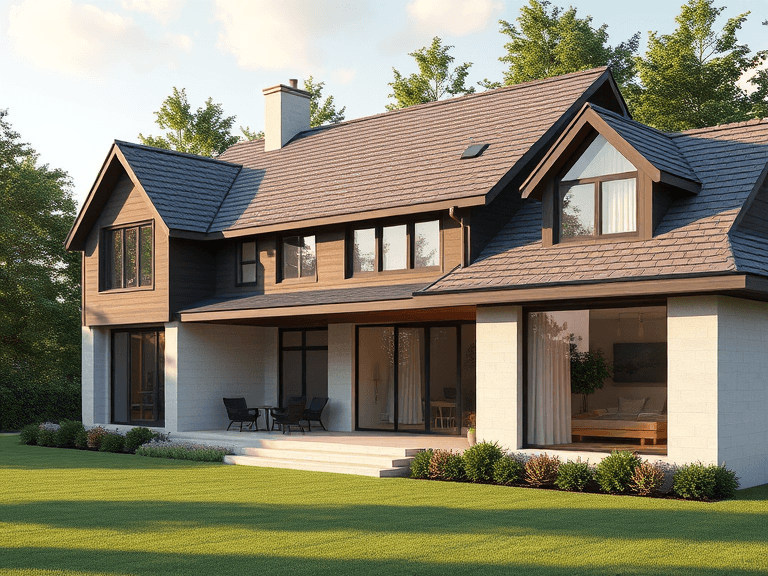
Roof leaks are a common issue that can significantly affect the integrity and longevity of a home. These leaks occur when water penetrates through the roofing material, leading to potential damage inside the structure. Various factors contribute to roof leaks, including age, poor installation, and severe weather conditions. Understanding these potential causes is essential for homeowners, as it allows them to take proactive measures to safeguard their property.
In many cases, a leaking roof can go unnoticed for long periods, which only exacerbates the situation. Homeowners may overlook initial signs that indicate a leaking roof, resulting in extensive damage and costly repairs. Furthermore, persistent leaks can compromise other structural components of a home, such as walls and foundations, leading to issues like mold growth, rot, and reduced property value. Therefore, early detection is critical for maintaining a safe living environment and protecting financial investments.
Being able to identify the signs that you may have a leaking roof is vital for timely intervention. Indicators can range from visible black spots on ceilings to unexplained water stains. Other signs include peeling paint, damp patches, and increased energy bills, which may result from the added strain on heating or cooling systems due to moisture-related issues. Homeowners must remain vigilant and conduct regular inspections to spot these red flags before they escalate into more severe problems.
Addressing roof leaks swiftly is not only important for preserving a home’s structure but also crucial for ensuring the safety of its occupants. The potential health hazards caused by mold due to prolonged moisture exposure can pose serious risks, particularly for individuals with respiratory issues. Consequently, understanding the implications of roof leaks reinforces the importance of recognizing early signs, which will be explored further in this article.
Visual Signs of Roof Leaks
Identifying signs that you may have a leaking roof is crucial for home maintenance and avoiding costly repairs. One of the most apparent indicators is the appearance of dark stains on ceilings and walls. These stains typically indicate water damage and can progress to mold growth if not addressed promptly. It’s essential to inspect these stains closely, as they often signal that water is infiltrating your home due to compromised roofing materials.
Another visual cue to look for is peeling or bubbling paint on interior walls and ceilings. This deterioration may occur as moisture penetrates the paint layer, causing it to lose adhesion. If you notice that sections of paint are lifting or bubbling, it may be a sign of underlying moisture problems related to roof leaks. Addressing the source of moisture is vital; otherwise, the paint damage will persist and worsen over time.
The presence of mold or mildew is another significant warning sign indicating that you may have a leaking roof. Mold thrives in damp environments, often developing in the corners of ceilings, behind furniture, or on walls. If you detect a musty odor or see discoloration in these areas, it is crucial to investigate further to identify any roof leaks contributing to the moisture problem.
A thorough inspection of the attic is also essential for spotting potential leaks. Look for signs of water stains on framing, insulation, or the underside of the roof sheathing. Furthermore, pay attention to the roof’s exterior, particularly areas around chimneys, vents, and flashing, as these are common points for leaks to develop. Regular evaluations of these areas will help ensure that any signs of a leaking roof are promptly addressed, minimizing the risk of extensive damage and preserving the integrity of your home.

Physical Symptoms Inside Your Home
Identifying signs that you may have a leaking roof often begins with observing physical symptoms manifesting within your home. One of the most common indicators is an increase in humidity levels. If certain rooms feel unusually damp or musty, it may be a warning sign of water infiltration, possibly stemming from a compromised roof. Elevated humidity can lead to discomfort and potentially unhealthy living conditions.
Another symptom to look out for is the presence of musty odors. A persistent mildew-like smell can indicate moisture accumulation that might not be immediately visible. This is often associated with water trapped in walls or ceilings, suggesting that your roof might be allowing water to intrude undetected. Regularly assessing your home for these odors can aid in promptly addressing any roofing issues.
Additionally, damage to insulation is a serious concern, especially if you notice that it appears saturated or has developed a different texture. Insulation plays a crucial role in regulating your home’s temperature and energy efficiency, and when it becomes wet, it loses its effectiveness. Monitoring the condition of your insulation can help you detect early signs of a leaky roof.
Another telltale sign is the appearance of warped or sagging ceilings. If you observe unusual bulging or drooping in your ceiling materials, water could be pooling and causing structural concerns. This symptom often indicates a serious issue requiring immediate attention to prevent further damage.
It is crucial to observe these symptoms over time, as they may intensify during seasonal changes or after heavy rainfall. Understanding the correlation between these factors can help you better manage and address signs that you may have a leaking roof before they escalate into more significant problems.
What to Do If You Suspect a Leak
If you suspect that you may have a leaking roof, it is crucial to address the issue promptly to prevent further damage to your home. The first step in this process is to conduct a thorough inspection of both the interior and exterior of your property. Inside your home, you should look for any water stains or discoloration on the ceiling and walls, particularly in areas that align with the roof structure. If you notice peeling paint or mold growth, these are also signs that you may have a leaking roof.
Once you have examined the interior, move outside to inspect the roof itself. Look for missing or damaged shingles, which can create entry points for water. Additionally, check areas around vents, chimneys, and skylights, as these are common culprits for roof leaks. Use caution when climbing onto the roof or using a ladder to inspect, ensuring you prioritize your safety.
If your inspection reveals potential signs that you may have a leaking roof, and you are unsure about how to proceed, it is advisable to consult a professional roofing contractor. Experienced professionals can conduct a comprehensive assessment and identify problems that may not be visible to the untrained eye. Furthermore, they can offer solutions to repair any damage and prevent leaks from occurring in the future.
To maintain the longevity of your roof, regular inspections and maintenance are essential. Clean gutters and downspouts regularly to ensure proper water drainage, and trim back any overhanging tree branches that may damage the roof surface. Taking these preventive measures significantly reduces the risk of leaks developing. By being proactive, homeowners can effectively safeguard their roofs and potentially save on costly repairs down the line.




